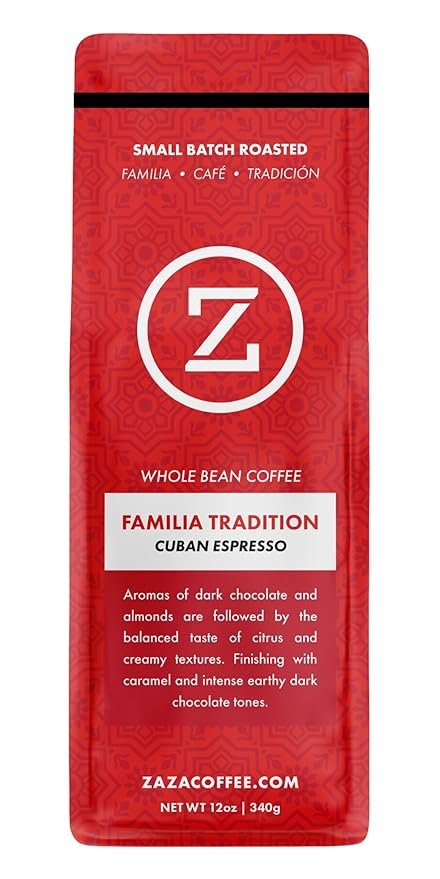Imagine starting your day with a smooth, refreshing glass of cold brew coffee, made right in your own kitchen. No more long lines at the coffee shop or overpriced drinks—just pure, delicious coffee that’s easy to make and even easier to enjoy. In this blog post, we’ll show you exactly how to make cold brew coffee using a cafetiere (also known as a French press).
Whether you’re a coffee newbie or a seasoned pro, you’ll find that making cold brew at home is not only simple, but also incredibly rewarding. We’ll cover everything from choosing the right beans to perfecting the brewing process. By the end, you’ll be a cold brew connoisseur, ready to impress your friends and family with your new skills.
Why Choose Cold Brew?
Refreshing Taste
Cold brew is known for its smooth, less acidic flavor compared to traditional hot-brewed coffee. The slow brewing process allows the coffee to develop a rich, full-bodied taste without the bitterness that sometimes accompanies hot coffee.
Health Benefits
Cold brew coffee retains more antioxidants than hot coffee, which can help protect your cells from damage. It’s also easier on the stomach, thanks to its lower acidity, making it a great choice for those with sensitive digestive systems.
Convenience
Once you master the art of making cold brew, you’ll have a ready-to-drink coffee supply that lasts up to two weeks in the fridge. Just pour and go—perfect for busy mornings or those lazy afternoons.
What You’ll Need
Cafetiere (French Press)
The cafetiere is a versatile brewing tool that many coffee lovers already own. Its simple design makes it perfect for cold brew, allowing you to steep the coffee grounds in water and then easily separate them.
Coarse Coffee Grounds
For the best results, use coarsely ground coffee. This prevents over-extraction and ensures a smooth, balanced flavor. You can either grind your own beans or purchase pre-ground coffee labeled for “French press” or “cold brew.”
Cold, Filtered Water
Since water makes up the majority of your cold brew, using filtered water will enhance the overall taste. Cold water is essential for the brewing process, as it extracts flavors differently than hot water.
Step-by-Step Guide to Making Cold Brew
Step 1: Measure Your Coffee and Water
Start by measuring out your coffee and water. A good rule of thumb is a 1:8 coffee-to-water ratio. For example, if you’re using 100 grams of coffee, you’ll need 800 milliliters of water.
Step 2: Add Coffee Grounds to the Cafetiere
Place the coarse coffee grounds into the cafetiere. Make sure the plunger is removed at this stage, as you’ll need room to add water and stir.
Step 3: Add Water and Stir
Pour the cold, filtered water over the coffee grounds. Stir gently to ensure all the grounds are fully saturated. This helps to evenly extract the flavors during the brewing process.
Step 4: Steep for 12-24 Hours
Place the lid on the cafetiere without pressing the plunger down. Allow the coffee to steep at room temperature or in the fridge for 12 to 24 hours. The longer the brew time, the stronger the flavor.
Step 5: Press and Strain
After steeping, press the plunger down slowly and evenly to separate the coffee grounds from the liquid. Pour the cold brew concentrate into a separate container for storage.
Step 6: Dilute and Serve
Cold brew concentrate is typically very strong, so you’ll want to dilute it before drinking. Mix one part cold brew with one part water or milk, adjust to taste, and enjoy your homemade brew over ice.
Choosing the Right Coffee Beans
Single-Origin vs. Blends
Single-origin beans offer distinct flavors from a specific region, while blends combine beans from different areas for a balanced taste. Experiment with both to find your preference.
Light, Medium, or Dark Roast?
Light roasts tend to be more acidic and fruity, while dark roasts are bolder with chocolatey notes. Medium roasts strike a balance between the two. Choose according to your flavor preference.
Freshness Matters
Always use fresh coffee beans for the best taste. Look for beans with a roast date and aim to use them within two weeks of roasting for optimal freshness.
Tips for the Perfect Cold Brew
Use the Right Grind Size
A coarse grind is essential for cold brew. Too fine a grind can lead to over-extraction, resulting in a bitter taste. If you’re grinding your own beans, aim for a consistency similar to breadcrumbs.
Experiment with Brew Time
The standard steeping time is 12 to 24 hours, but feel free to experiment. A shorter brew time will result in a milder flavor, while a longer steep will produce a stronger, more concentrated coffee.
Store Properly
Keep your cold brew concentrate in an airtight container in the fridge. It will stay fresh for up to two weeks, but the flavor is best within the first week.
Adding Flavor to Your Cold Brew
Sweeteners and Syrups
Add a splash of simple syrup, honey, or flavored syrup to your cold brew for a touch of sweetness. These dissolve more easily than granulated sugar, ensuring a smooth drink.
Dairy and Non-Dairy Milks
Enhance your cold brew with a splash of milk or a non-dairy alternative like almond, oat, or soy milk. Each adds a unique texture and flavor to your coffee.
Spices and Extracts
Experiment with adding spices like cinnamon or nutmeg, or a dash of vanilla extract, to your cold brew. These additions can elevate the flavor and make your drink even more enjoyable.
Zaza Coffee Familia Tradition Cuban Espresso

- Whole Bean Coffee
- Tradition Cuban Espresso
Serving Suggestions
Classic Cold Brew
Serve your cold brew over ice with a splash of milk and your favorite sweetener. This classic combination is refreshing and delicious.
Cold Brew Latte
For a creamier option, mix equal parts cold brew concentrate and milk. Froth the milk for a latte-like texture and top with a sprinkle of cocoa powder or cinnamon.
Flavored Cold Brew
Get creative by adding flavored syrups or spices to your cold brew. Try a vanilla or caramel syrup for a sweet twist, or add a pinch of cinnamon for a warm, aromatic touch.
Common Mistakes to Avoid
Using the Wrong Grind Size
Always use a coarse grind for cold brew. Fine grounds can lead to over-extraction, resulting in a bitter and unpleasant taste.
Not Steeping Long Enough
Cold brew requires a long steeping time to fully develop its flavors. Aim for at least 12 hours, but don’t hesitate to go up to 24 hours for a stronger brew.
Not Diluting the Concentrate
Cold brew concentrate is very strong and can be overpowering if not diluted. Always mix your concentrate with water or milk before serving.
Health Benefits of Cold Brew
Lower Acidity
Cold brew is less acidic than hot coffee, making it gentler on the stomach and teeth. This lower acidity can be beneficial for those with sensitive digestive systems.
Rich in Antioxidants
Cold brew retains more antioxidants than hot coffee, which can help protect your cells from damage. These antioxidants contribute to overall health and well-being.
Hydration-Friendly
Cold brew is typically served over ice, making it a hydrating and refreshing option, especially on hot days. It’s a great way to enjoy your caffeine fix while staying hydrated.
Exploring Different Cold Brew Recipes
Vanilla Almond Cold Brew
Mix your cold brew concentrate with almond milk and a splash of vanilla extract. Add a touch of honey for sweetness and enjoy a nutty, flavorful drink.
Mocha Cold Brew
Combine cold brew concentrate with chocolate syrup and milk for a delicious mocha twist. Top with whipped cream and a sprinkle of cocoa powder for an indulgent treat.
Spiced Cold Brew
Add a pinch of cinnamon, nutmeg, and cardamom to your cold brew for a warm and spicy flavor. This aromatic blend is perfect for cozy mornings or chilly afternoons.
Frequently Asked Questions
How long does cold brew last in the fridge?
Cold brew concentrate can last up to two weeks in the fridge when stored in an airtight container. However, it’s best enjoyed within the first week for optimal flavor.
Can I make cold brew with regular ground coffee?
While you can use regular ground coffee, it’s best to use coarsely ground coffee for cold brew. Fine grounds can lead to over-extraction and a bitter taste.
Do I need to refrigerate my cold brew while it’s steeping?
You can steep your cold brew at room temperature or in the fridge. Steeping at room temperature will speed up the extraction process, while refrigerating will result in a smoother, less acidic brew.
Conclusion
Making cold brew coffee in a cafetiere is a simple and rewarding process. With just a few basic ingredients and tools, you can enjoy a refreshing, delicious coffee that’s perfect for any time of day.
By following the steps outlined in this guide, you’ll be able to create your own cold brew and experiment with different flavors and serving styles. Don’t be afraid to get creative and make it uniquely yours.
Ready to master the art of cold brew coffee? Start brewing today and experience the rich, smooth flavors that only cold brew can offer. Cheers to your new favorite coffee ritual!






